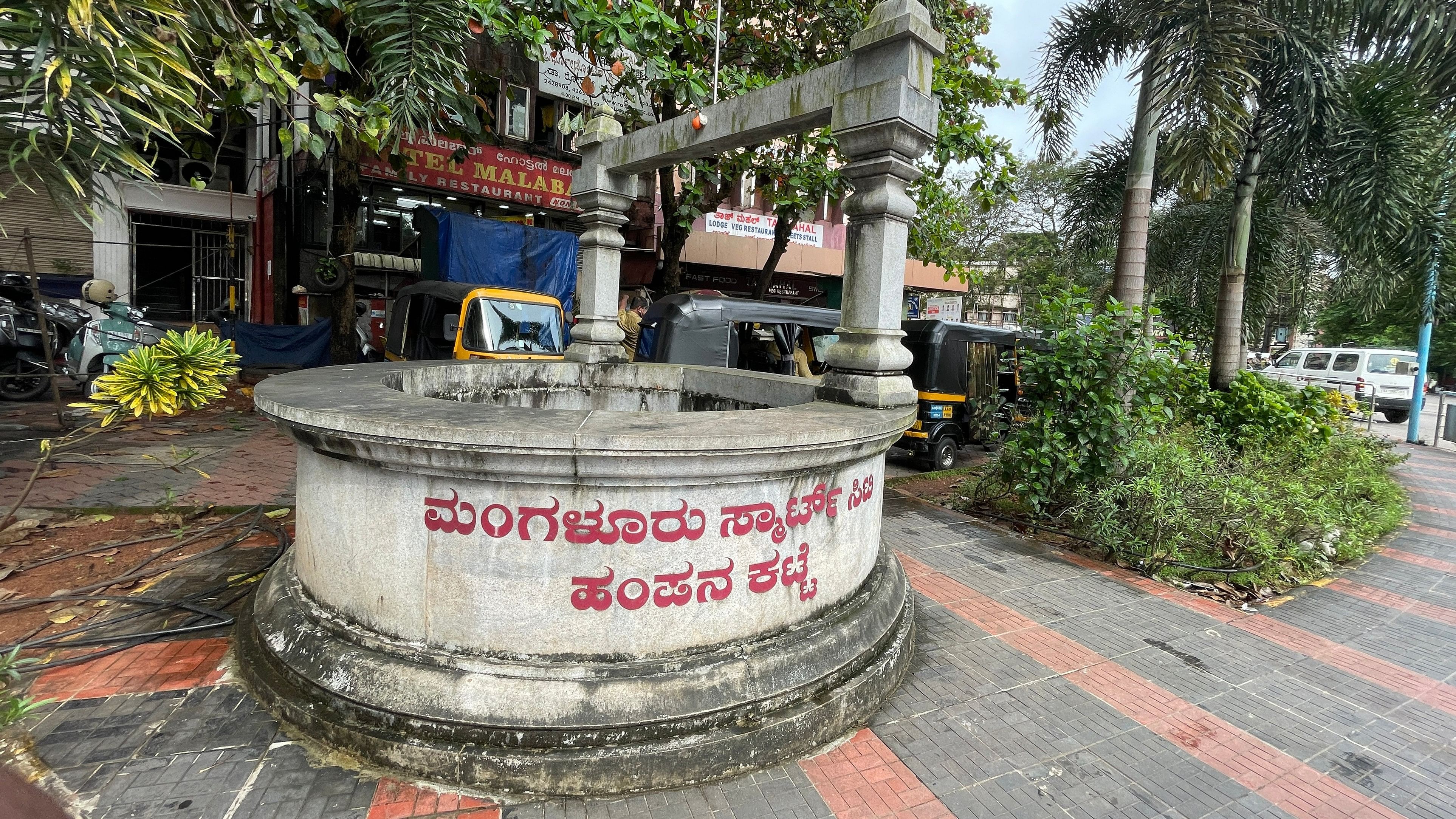
The old well discovered at Hampanakatta junction in 2019.
Credit: DH Photo by Fakruddin H
Before Mangaluru had a tap water system, its residents relied on open wells. Until 1962, there was no municipal water supply and people were solely dependent on wells. Each household typically had its own well, and those without access depended on public wells located at key junctions.
These wells were crucial for the community. Some of these prominent junctions have been named after these wells, including Bendoorwell and Pumpwell. As Mangaluru grew from a town into a city, many of these wells faded into obscurity until recent road work brought them back into the spotlight.
In October 2019, a dilapidated well was uncovered during road construction near Bolar Leewell in Mangaluru. This well is believed to have been constructed by British officer G Lee Morris, who served the region as Principal Collector from 1863 to 1864. The public well once served about 50 families in the area close to River Netravati. As the city began to grow, the mouth of the well was closed around 50 years ago. Later, a bus shelter was built nearby, but the place continued to be called Leewell bus stop.
Earlier, in September 2019, another historical well was discovered during road construction at the Hampankatta junction in the central business district of Mangaluru. This well, dating back over a century, was initially used by a man named Appanna Poojary, who used to give water and jaggery to passersby — bullock cart and horse carriage riders as there were no motor vehicles before 1905. The well at Hampankatta was rediscovered during the Smart City Project.
This area, originally named Appannakatte, was later renamed Hampankatta by the British in 1920. A mural of Appanna Poojary was painted opposite the well as a mark of tribute. It eventually faded out of public memory, but until 1975, the fire brigade used to pump water from this well for their use.
In a more recent find, in June 2021, an old well was found during the demolition of Rashtrakavi Govinda Pai Circle for redevelopment. This well, covered by a concrete slab about 60 years ago, was uncovered as part of the Mangaluru Smart City Limited project plans. The then mayor, Premanand Shetty, announced that the well would be preserved. He also confirmed plans to restore and utilise the well after necessary testing.
On July 7, 2021, a well near Dongerekere Peepal Tree, Ashwathakatte, was discovered during drainage and footpath work. The well, filled with clean water, was built with red stones and is structurally strong despite some damage from nearby tree roots.
Debates over restoration
While some residents debate the allocation of resources for well restoration over other city needs, these discoveries highlight the balance between development and preservation, ensuring that the city's heritage is not lost to time.
However, not many endorse this view, as the city has been facing an acute water shortage in recent times. Tony Lewis, a resident on the outskirts of the city, says, “We need to revive old wells and link them with rainwater harvesting structures. The city corporation can even provide subsidies to those individuals who link rainwater systems to their wells.”
The wells’ restoration underscores the importance of preserving Mangaluru's unique historical landmarks and recharging the diminishing water resources of the city. However, restored wells in use are few and far between.
Mangaluru receives copious rains during monsoon, yet the growing city faces water shortage in the summer. Reviving these traditional wells could, at least, partly address the problem of water shortage.